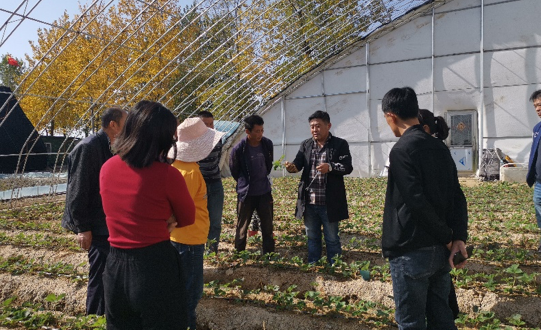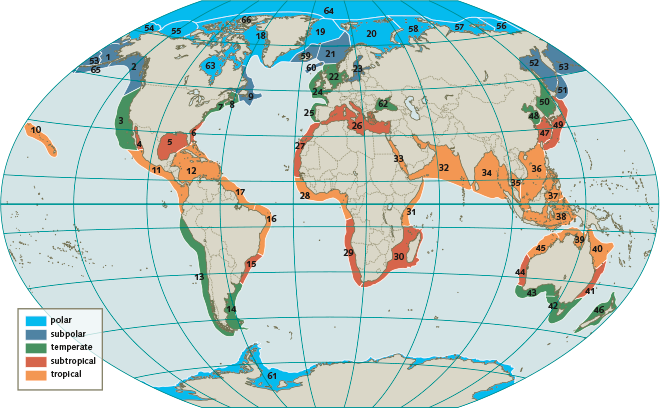GEI Launches Wetland and Water Bird Conservation Project in Collaboration with Yalu River Wetland National Nature Reserve and Dandong Community
On October 11, GEI worked closely with Dandong Yalu River Wetland National Nature Reserve and Dadingzi Village of Changshan Town, Donggang City to launch the joint project, “Protecting Dandong Coastal Wetlands and Birds through Community Cooperation.” The project, which is supported by UNDP/GEF Yellow Sea Large Marine Ecosystem (YSLME) Phase II, successfully held a launching ceremony and capacity building meeting in Dandong, with representatives from the Nature Reserve and local communities in attendance.

Dandong Yalu River Wetland National Nature Reserve Management Center director, Zhang Zhifeng, speaking at the event. ©Fan Min
Wang Jing, GEI’s Marine Conservation Project Manager, shared with the people of Dadingzi Village the project’s background and why it matters for the community to aid in protecting waterbirds of the mudflats. She introduced the concept of “Community Conservation Concession Agreements (CCCA)” and discussed cases with similar mechanisms practiced domestically and internationally with the attendees so as to examine how to transform passive protection into active protection. The project was discussed with the villagers during preliminary research and was designed to encourage villagers’ active participation in the protection of Yellow Sea waterbirds and wetlands by supporting strawberry and shrimp farming in the community.

Launching Ceremony of GEI Yellow Sea Large Marine Ecosystem (YSLME) Marine Community Project ©Wang Jing
Under this project, the villagers will form a monitoring and patrol team to assist the Yalu River Wetland National Nature Reserve to perform wetland bird protection and monitoring work. They will also help with the process of attaching marked bands to the birds’ legs along with other tasks, based on the needs of the reserve. The pilot area, Dadingzi Village, is located along the upper reaches of the Yellow Sea tidal channel, which currently discharges “escaped trash” and sewage into the sea. Because of this issue, the village will also carry out efforts to improve the garbage disposal system.
Previously, a constructed wetland was proposed as a system to treat local sewage. However, in the winter, the temperature in Dandong can drop below -20ºC, which means that it is difficult for an artificial wetland to actually work effectively.
We also invited Chairman Liu Yonglong of Rendu Ocean, a Shanghai-based NGO focusing on marine environmental protection, to the community meeting to learn about the organization’s report “Reducing Waste Entering the Sea and Moving Towards Zero-Waste.” The report introduces the harm caused by garbage by explaining the current status of marine debris and guided the villagers of Dadingzi towards the steps they can take to improve the current waste pollution problem. After the sharing session, we conducted a formal project launching ceremony, a community agreement signing ceremony, and forest patrolman certification ceremony.

Liu Yonglong, chairman of Rendu Ocean, speaking at the event © Wang Jing

Dandong Yalujiangkou Wetland National Nature Reserve signed a community cooperation protection agreement with Dadingzi Village Committee (pictured here signing is village leader Wang Weidong).©Wang Jing

Representatives from GEI, Yalu River Wetland National Nature Reserve, and Dadingzi Village Committee issued patrolman certificates to Dadingzi Village patrolmen. ©Wang Jing
Under the agreement, Dadingzi villagers will begin to patrol along the designated route according to the project details twice a week, while the nature reserve and GEI will support Dadingzi Village with trainings in strawberry pest control and farming advisories during the strawberry planting season in October.
There are 66 large marine ecosystem systems (LMEs) around the globe. The Yellow Sea Large Marine Ecosystem is one of them, providing food, medicine, and income sources for about 600 million people along the coast. Not only does it serve as an important wintering and spawning ground for most fisheries and habitats, but also as a crucial corridor for East Asian-Australasian Flyway (EAAF). In fact, the Yalu River Estuary is the world’s largest stopover for migratory birds.
Area marked 48 is the Yellow Sea Large Marine Ecosystem
Unfortunately, the region is also one of the marine ecosystems most negatively impacted by pollution and stands to greatly lose via the potential impacts of climate change. Habitat loss, jellyfish outbreaks, overfishing, and unsustainable farming, in addition to pollution itself, are among the constant threats to this key marine ecosystem. Through its multi-platform approach, the project will promote the participation of the community and local citizens in ecosystem protection, explore suitable local conservation actions, and continue to promote the healthy development of the Yalu River Estuary wetland and the Yellow Sea Large Marine Ecosystem.
Aside from our focus on pollution issues in the Dadingzi area, it is also important to discuss the link between GEI’s project and the most famous local industry: strawberry farming. Dandong is famous for its 99 strawberry and Donggang, where GEI’s pilot village Dadingzi is located, is best-known as “China’s number-one strawberry county.” The unique geography provides an ideal climate and soil environment for strawberry production, which has elevated strawberries to become the trademark of the local community. Locally in Donggang there is a saying, “Every month, the 99 strawberries in Donggang are in shortage,” because of their popularity and excellent flavor. This year, when the Donggang 99 strawberry harvest rolls around in December, based on the training component of our project, locals should already begin to see gains. The strawberries sell fast—make sure to get your order in early to enjoy some of the best crops around.

Strawberry Seedlings at a local farm of Dadingzi Village


